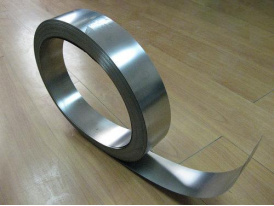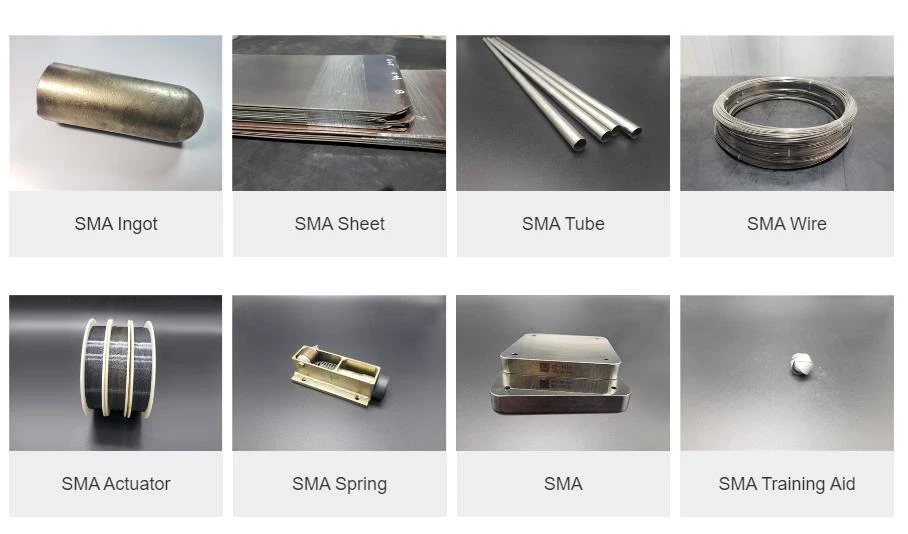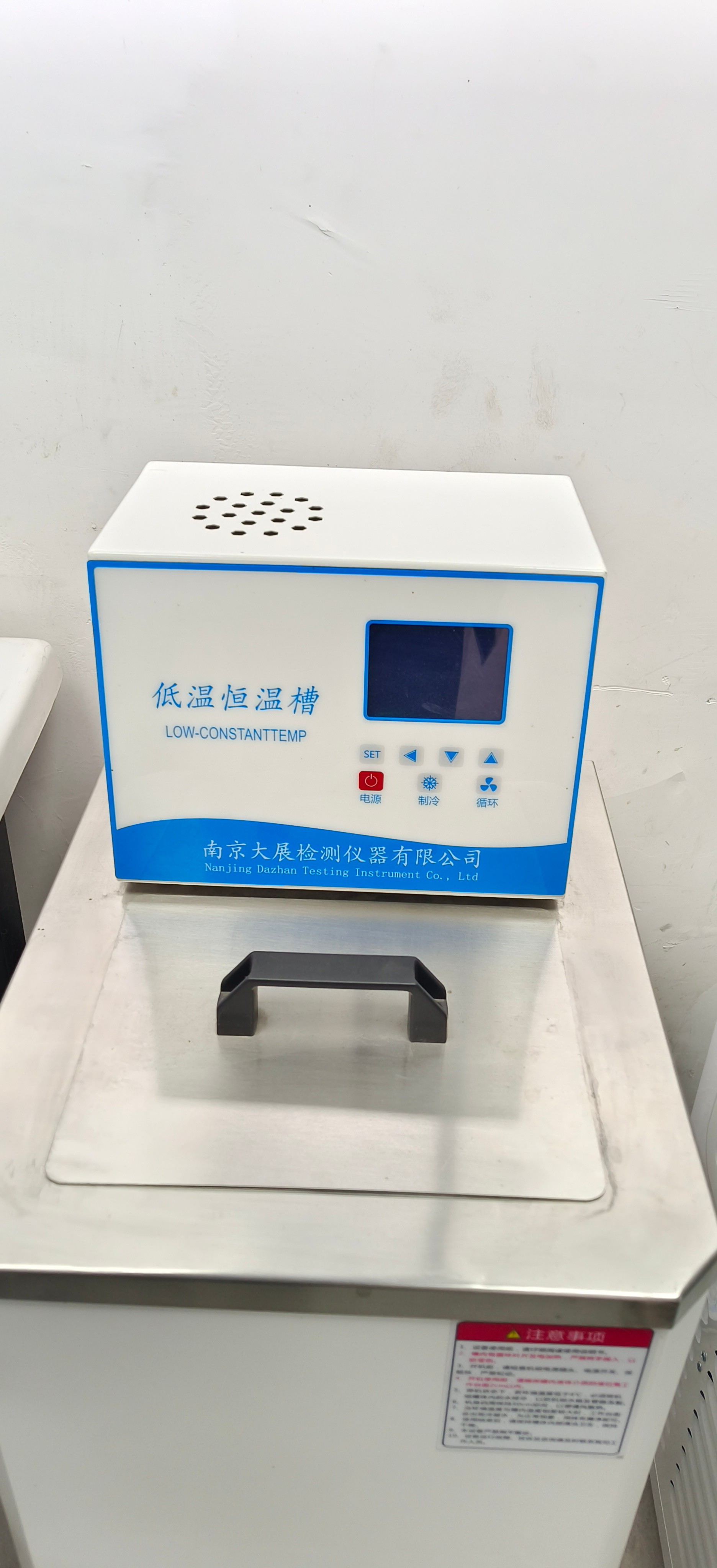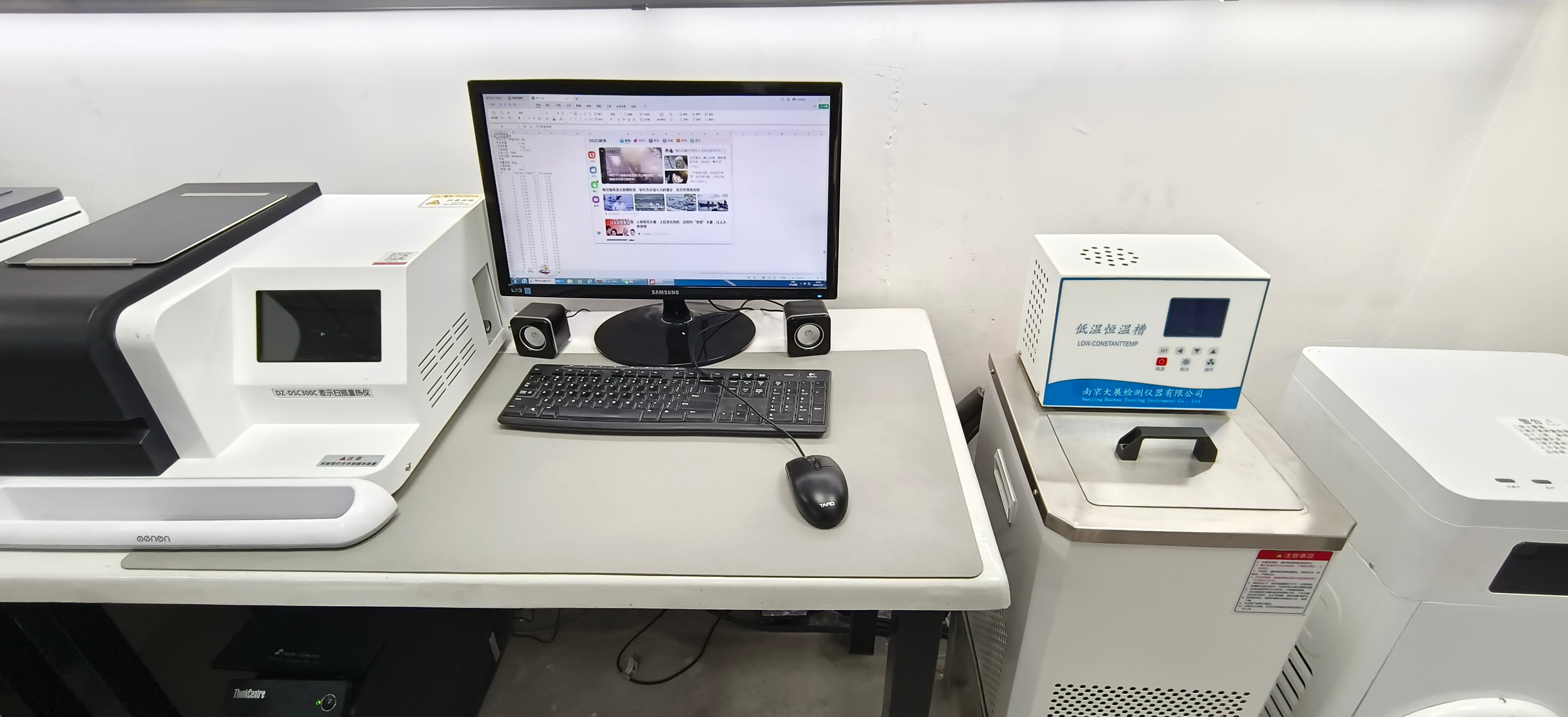Introduction
In the realm of advanced materials, NiTi foil stands out as a remarkable innovation, primarily due to its unique properties derived from nickel and titanium. This shape memory alloy (SMA) is celebrated for its ability to return to a predetermined shape when subjected to specific temperatures, making it invaluable in various applications ranging from medical devices to automotive components. Understanding the diverse applications of NiTi foil is essential for industries looking to leverage its unique characteristics effectively.
Understanding NiTi Foil Applications
NiTi foil's versatility allows it to be utilized across multiple sectors, including healthcare, robotics, and aerospace. In the medical field, for instance, ni ti shape memory alloy is employed in stents and guidewires where its biocompatibility and flexibility are crucial. Moreover, its application extends into consumer electronics and actuators where precise movement control is required, showcasing the broad potential of this nickel material.
The Role of Chinese Manufacturers
Chinese manufacturers play a pivotal role in the global supply chain of NiTi foil production. With significant advancements in technology and manufacturing processes, these companies have established themselves as leaders in producing high-quality ni ti shape memory alloy products at competitive prices. Their ability to scale production while maintaining quality has made them indispensable partners for businesses worldwide seeking reliable sources of nickel material.
Importance of Quality in NiTi Foil
Quality assurance is paramount when dealing with NiTi foil due to its critical applications that often involve safety and performance standards. Ensuring that each batch meets stringent quality control measures not only enhances product reliability but also builds trust with end-users who depend on these materials for vital applications. Thus, understanding the importance of quality in ni ti shape memory alloy production cannot be overstated; it directly impacts performance outcomes across various industries.
Overview of NiTi Foil

NiTi foil, a remarkable material composed of nickel and titanium, has gained significant attention in various industries due to its unique properties. This thin sheet exhibits the fascinating behavior of shape memory alloy (SMA), which allows it to return to a predetermined shape when subjected to certain temperatures. Understanding NiTi foil is crucial for appreciating its applications and the advancements made by manufacturers, particularly in China.
What Is NiTi Foil?
NiTi foil is a specialized metal alloy made primarily from nickel (Ni) and titanium (Ti), forming what is commonly known as Nitinol. This alloy possesses extraordinary characteristics, especially its ability to undergo phase transformations that enable it to remember its original shape after deformation. When heated above a specific temperature, the NiTi foil reverts back to this original form, making it an essential component in devices that require precise movement or actuation.
The versatility of NiTi foil extends beyond just its shape memory capabilities; it also demonstrates superelasticity at certain temperatures. This means that under stress, the material can deform significantly without permanent change until the stress is removed or reduced. Such properties make NiTi foil invaluable in fields ranging from medical devices—like stents and guidewires—to aerospace engineering applications.
Characteristics of Nickel Material
Nickel material plays a vital role in enhancing the properties of NiTi foil. As one of the primary components, nickel contributes significantly to the alloy's strength, corrosion resistance, and thermal stability. The presence of nickel not only aids in achieving desired mechanical properties but also influences how well the material can respond to temperature changes—an essential factor for any shape memory alloy.
One notable characteristic of nickel is its ability to improve ductility in alloys like Nitinol; this allows for easier processing and shaping during manufacturing stages. Additionally, nickel enhances resistance against oxidation and wear over time, ensuring longevity and reliability in applications where durability is paramount. These attributes make nickel an indispensable element within NiTi foils used across various sectors.
Applications of Shape Memory Alloy
The applications of shape memory alloys (SMAs), particularly those utilizing NiTi foil, are vast and varied across multiple industries. In medical technology, for instance, these materials are employed in devices such as stents that expand upon reaching body temperature or orthodontic wires that adapt seamlessly with dental structures over time. The unique properties of ni ti shape memory alloy allow for innovative solutions that improve patient outcomes while minimizing invasive procedures.
Beyond healthcare, NiTi foils find their place within robotics and aerospace engineering as actuators or components designed for adaptive systems responding dynamically to environmental changes or mechanical stresses. Furthermore, they have been utilized in consumer products like eyeglass frames that return to their original form after bending—a testament to their everyday utility driven by advanced technology.
As industries continue exploring new frontiers with smart materials like ni ti shape memory alloys, we can expect further innovations that leverage these remarkable characteristics for enhanced performance across diverse applications.
Leading NiTi Foil Manufacturers in China

When it comes to NiTi foil, China's manufacturing landscape is bustling with innovation and expertise. The country's manufacturers are setting benchmarks in quality and technology, particularly in the realm of nickel material and shape memory alloys. This section will highlight some of the leading players, including GEE SMA, Advanced Nitinol Technologies, and a few other notable suppliers that are making waves in the industry.
GEE SMA: Innovators in Nitinol
GEE SMA has carved out a niche as a frontrunner in the production of NiTi foil, specifically focusing on ni ti shape memory alloy applications. Their commitment to research and development ensures they remain at the forefront of innovation within this specialized field. With a robust portfolio of products that cater to various industries—from medical devices to aerospace—GEE SMA showcases the versatility and potential of nickel material.
What sets GEE SMA apart is their relentless pursuit of quality assurance throughout their manufacturing processes. They employ advanced techniques that not only enhance product performance but also ensure compliance with international standards for NiTi foil. As demand for shape memory alloys continues to grow globally, GEE SMA's innovative solutions position them as a key player in meeting these needs.
Advanced Nitinol Technologies
Another heavyweight in the realm of NiTi foil manufacturing is Advanced Nitinol Technologies (ANT). Known for their cutting-edge approaches to producing high-quality ni ti shape memory alloy products, ANT has established itself as a leader through technological advancements and stringent quality controls. Their extensive range includes everything from thin foils to complex shapes tailored for specific applications.
ANT’s focus on customer collaboration allows them to tailor solutions that meet unique requirements while maintaining high standards for nickel material integrity. This adaptability not only enhances their product offerings but also solidifies relationships with clients across various sectors such as biomedical engineering and industrial applications. By investing heavily in R&D, ANT remains committed to pushing the boundaries of what’s possible with shape memory alloy technology.
Other Notable Suppliers
While GEE SMA and Advanced Nitinol Technologies are certainly prominent figures in the NiTi foil market, several other suppliers deserve recognition for their contributions as well. Companies like Memry Corporation and Fort Wayne Metals have been instrumental in expanding the availability of high-quality ni ti shape memory alloy products around the globe. These manufacturers emphasize rigorous quality control measures to ensure that their nickel material meets or exceeds industry standards.
Moreover, these suppliers offer diverse product lines that cater not only to traditional markets but also emerging industries where innovative uses for NiTi foil are being explored daily. Their commitment to sustainability practices further enhances their reputation within an increasingly eco-conscious marketplace. As competition heats up among these notable suppliers, customers can expect continuous improvements and innovations within this dynamic field.
Quality Standards and Certification

In the world of NiTi foil manufacturing, quality standards and certifications play a critical role in ensuring that products meet industry requirements and customer expectations. The production of nickel material, especially when it comes to shape memory alloys like ni ti shape memory alloy, requires stringent quality control processes. These measures not only enhance product reliability but also foster trust between manufacturers and end-users.
Understanding Quality Control in Manufacturing
Quality control in manufacturing NiTi foil involves systematic monitoring and evaluation of various processes to ensure that the final product meets specified standards. This includes everything from raw material selection to the final inspection before shipping. By implementing robust quality control measures, manufacturers can minimize defects and guarantee that their nickel material consistently performs as expected in various applications.
Moreover, effective quality control helps manufacturers identify potential issues early on, saving time and resources in the long run. It ensures that all batches of ni ti shape memory alloy possess uniform properties essential for their intended applications. Ultimately, this commitment to quality not only enhances product performance but also boosts customer satisfaction.
Relevant Certifications for NiTi Foil
Several certifications are crucial for NiTi foil manufacturers looking to establish credibility in the market. ISO 9001 is one such standard that signifies a commitment to consistent quality management practices across all operations involved in producing nickel materials. Additionally, certifications like ASTM F2063 specifically address the unique requirements of shape memory alloys, ensuring they meet industry specifications.
Other relevant certifications may include those pertaining to environmental management systems (ISO 14001) or occupational health and safety (ISO 45001), which further demonstrate a manufacturer's dedication to responsible practices throughout their operations. These certifications serve as benchmarks against which consumers can evaluate potential suppliers of ni ti shape memory alloy products, ultimately guiding them toward reliable choices.
Importance of Compliance in Nickel Material Production
Compliance with established quality standards is paramount for manufacturers dealing with nickel materials such as NiTi foil. Adhering to these regulations not only safeguards consumer health and safety but also protects manufacturers from potential legal repercussions associated with non-compliance. Furthermore, compliance fosters innovation by encouraging companies to adopt best practices within their production processes.
In an increasingly competitive market for ni ti shape memory alloy products, maintaining high compliance levels can be a significant differentiator among suppliers. This focus on rigorous adherence not only enhances product credibility but also positions companies favorably within global supply chains where regulatory scrutiny is intensifying. Ultimately, prioritizing compliance ensures that both manufacturers and customers can enjoy peace of mind regarding the integrity of NiTi foil applications.
The Supply Chain of NiTi Foil

The supply chain of NiTi foil is a complex web that begins with sourcing raw materials and ends with delivering finished products to various industries. Understanding this supply chain is crucial, especially when considering the unique properties of nickel material and its applications in shape memory alloys. As demand for NiTi foil continues to grow, the efficiency and reliability of this supply chain become increasingly important.
Sourcing Raw Materials
Sourcing raw materials for NiTi foil primarily involves procuring high-quality nickel and titanium, which are essential components of the ni ti shape memory alloy. Manufacturers typically look for suppliers who can provide these metals in a consistent and reliable manner, ensuring that the final product meets stringent quality standards. Additionally, sourcing strategies may vary depending on regional availability and market conditions, influencing both cost and production timelines.
In China, local suppliers often play a significant role in providing these raw materials due to their proximity to manufacturing hubs. This helps reduce lead times and transportation costs while fostering relationships between manufacturers and suppliers. The quality of nickel material sourced directly impacts the performance characteristics of the resulting NiTi foil, making careful selection a priority for producers.
Distribution Channels in China
Once NiTi foil is manufactured, it must navigate through various distribution channels before reaching end-users. In China, these channels include direct sales from manufacturers to industries such as medical devices, aerospace, automotive, and more—each with its own specific requirements for ni ti shape memory alloy applications. Distributors also play a vital role by connecting manufacturers with smaller businesses or international clients who may not have direct access to producers.
The logistics involved in distributing NiTi foil can be intricate due to varying regulations across different regions within China as well as global markets. Efficient distribution networks ensure timely delivery while maintaining product integrity—an essential aspect given the sensitive nature of many applications involving shape memory alloys. Furthermore, e-commerce platforms are increasingly becoming popular avenues for smaller suppliers looking to reach broader markets without extensive overhead costs.
Impact of Global Demand on Supply
Global demand for NiTi foil has been steadily increasing due to its unique properties as a shape memory alloy used in diverse applications ranging from medical devices like stents to advanced robotics systems. This surge in demand significantly influences the entire supply chain—from sourcing raw materials through production processes down to distribution logistics. As industries continue adopting innovative uses for ni ti shape memory alloy technology, manufacturers must adapt quickly to meet this growing need without compromising quality.
Moreover, fluctuations in global markets can affect both pricing and availability of essential nickel material needed for producing high-quality NiTi foils. Geopolitical factors or trade agreements may also impact how easily manufacturers can source their materials or sell their products internationally—creating an environment where agility becomes key for success in this sector. In essence, understanding these dynamics is crucial not only for manufacturers but also for businesses that rely on consistent access to top-tier NiTi foil.
Future Trends in NiTi Foil Manufacturing

The landscape of NiTi foil manufacturing is evolving, driven by technological innovations and changing market dynamics. As industries increasingly adopt advanced materials like ni ti shape memory alloy, manufacturers are exploring new ways to enhance product performance and sustainability. This section delves into the future trends shaping the NiTi foil sector.
Innovations in Shape Memory Alloy Technology
Innovations in shape memory alloy technology are paving the way for more versatile applications of NiTi foil across various industries. Researchers are experimenting with new compositions and processing techniques to improve the mechanical properties and thermal response of nickel material-based alloys. These advancements not only enhance the efficiency of ni ti shape memory alloy but also open doors for applications in aerospace, medical devices, and robotics.
One exciting development is the integration of smart technologies with NiTi foils, allowing them to respond dynamically to environmental stimuli such as temperature or stress. This could lead to revolutionary changes in how we design products that require adaptive functionality, resulting in smarter devices that can self-adjust based on their operating conditions. As these innovations continue to emerge, we can expect a surge in demand for high-quality NiTi foil from manufacturers who can keep pace with these advancements.
Sustainability in Production Practices
Sustainability is becoming a paramount concern within the manufacturing sector, and NiTi foil production is no exception. Manufacturers are increasingly adopting eco-friendly practices that minimize waste and reduce energy consumption during production processes involving nickel material. By implementing recycling initiatives for scrap materials generated during fabrication, companies can significantly lower their environmental impact while also cutting costs.
Moreover, there’s a growing emphasis on sourcing raw materials responsibly within the supply chain for ni ti shape memory alloy production. Efforts are being made to ensure that nickel used in foils comes from sustainable mines that adhere to ethical labor practices and environmental standards. This commitment not only enhances brand reputation but also attracts environmentally conscious consumers who prioritize sustainability when choosing suppliers.
Predicted Market Growth and Demand
The market for NiTi foil is anticipated to experience significant growth over the coming years due to increasing demand across various sectors such as healthcare and automotive engineering. Analysts predict that advancements in ni ti shape memory alloy technologies will drive this growth further as they enable new applications previously thought impractical or impossible with traditional materials.
In addition, as industries strive for greater efficiency through lightweight components made from high-performance alloys like nickel material-based foils, manufacturers will need to scale up production capabilities accordingly. The convergence of innovation and rising demand suggests a robust future ahead for both producers of NiTi foil and their customers looking for cutting-edge solutions tailored to meet evolving challenges.
Conclusion
In wrapping up our exploration of NiTi foil, it's crucial to recognize the remarkable properties and applications of this unique material. The combination of nickel and titanium creates a shape memory alloy that can return to its original form after deformation, making it invaluable across various industries. As we look toward the future, understanding the dynamics of NiTi foil will be essential for stakeholders in manufacturing, healthcare, and technology.
Key Takeaways About NiTi Foil
NiTi foil stands out due to its exceptional characteristics derived from its composition as a shape memory alloy. The unique ability of ni ti shape memory alloy to undergo significant deformation while retaining its original shape under specific conditions can revolutionize product designs in numerous fields. Additionally, the quality of nickel material used in production directly influences performance; thus, ensuring high standards is paramount for manufacturers and consumers alike.
Selecting the Best Supplier
When it comes to sourcing NiTi foil, selecting a reliable supplier is key to ensuring quality and consistency in your products. Look for manufacturers with robust certifications that demonstrate their commitment to quality control in producing nickel material and ni ti shape memory alloy products. Don't hesitate to ask potential suppliers about their manufacturing processes and past projects; a transparent company will provide you with confidence in their capabilities.
The Future of NiTi Foil in Various Industries
The future looks bright for NiTi foil as innovations continue to emerge within the realm of shape memory alloys. With an increasing focus on sustainability in production practices, manufacturers are likely to explore eco-friendly methods that could reshape industry standards while maintaining performance integrity. Furthermore, as global demand rises across sectors like healthcare and aerospace, we can expect significant market growth for ni ti shape memory alloy applications that enhance functionality and user experience.

